Built by Others is an article series showcasing layouts constructed by modelers using plans and projects from the pages of Model Railroader and its associated magazines. The Alkali Central was an HO scale project railroad built by the MR staff and featured in the December 1995 issue. Robert Mountenay adapted the track plan to fit a Reading-theme railroad, expanding it to provide staging and a bit more operation. – Ed.
Built by Others: Robert Mountenay’s HO scale Merkiomen Valley Branch
By Robert Mountenay – photos by the author
My Merkiomen Valley Branch of the Reading Company was inspired by the Alkali Central, Model Railroader’s December 1995 project railroad. Ironically, the Alkali Central was published in the same issue of MR that my first Merkiomen Branch layout appeared. That railroad was a 42” x 66” layout and built in the living room of the parsonage my family and I occupied in Western Pennsylvania.
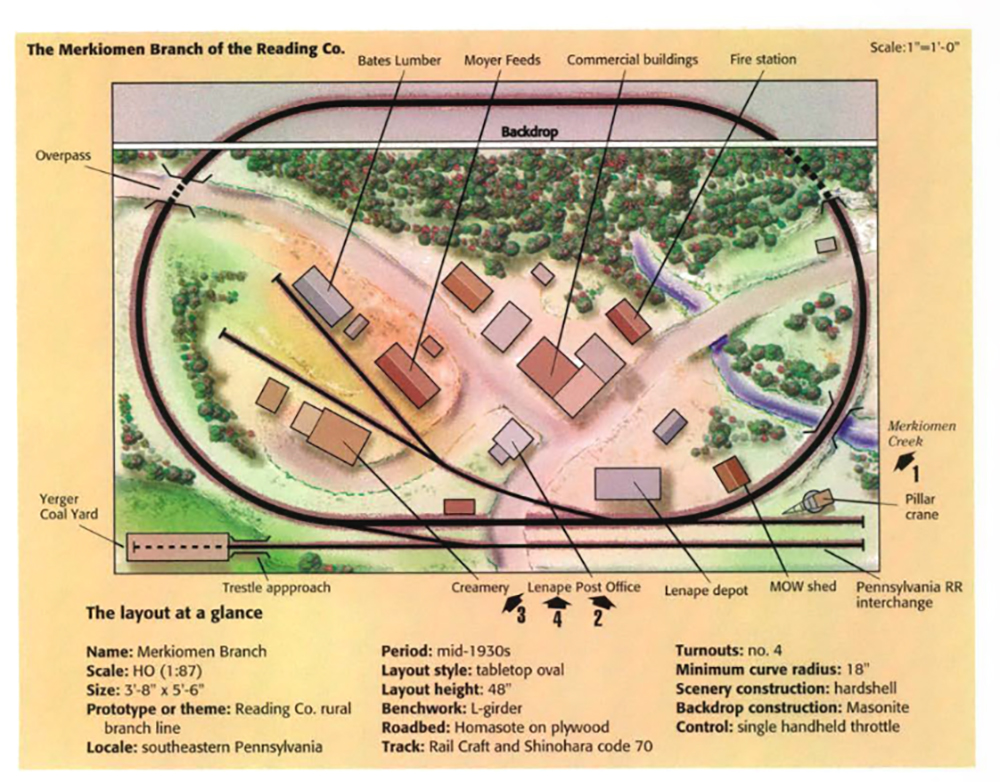
I’m a (retired) Lutheran pastor, and several months after the 1995 article, I was called to a congregation in northern New Jersey. Although the little layout moved with me, I started a new project.
Initially, I built an around the walls, point-to-point layout in a 13 x 13-foot basement room. Although the new layout’s construction was sound, it lacked something I could never put my finger on. The more I worked on it, the more dissatisfied I became with it.
My generous wife suggested that if I didn’t like it, I should scrap it and start again, so I abandoned that layout and began to look for inspiration for a new one. The design that captured my imagination was the Alkali Central. I was surprised that after building a realistic point-to-point layout, I found myself favoring a loop plan once more, but I was hooked.
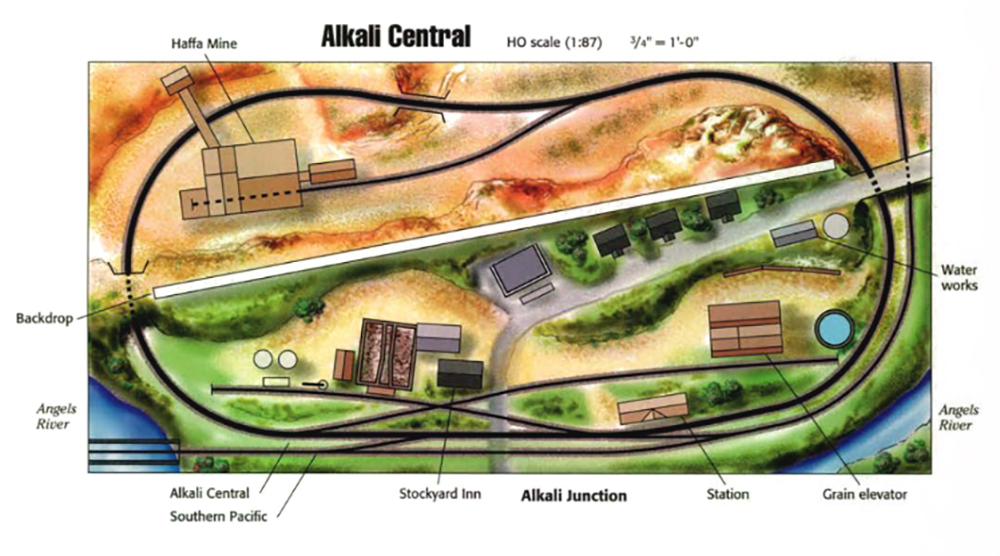
My original version of the Merkiomen Branch was a simple loop, but it was a loop with a difference: I’d mounted a backdrop toward the rear of the layout, making its circular nature less obvious. Despite also being a loop layout, the Alkali Central had a backdrop to split the layout into distinct areas and offered a lot of interesting options. Its plan featured several industries, a runaround track, a mining operation, as well as an interchange with a class one railroad – the Southern Pacific.
It’s all in the name
While MR’s Western rendition of the Alkali Central was very attractive, I owned a sizable roster of Reading equipment and a collection of predominantly eastern rolling stock, so I opted to transport the track plan from the California desert to the rolling hills of southeastern Pennsylvania.
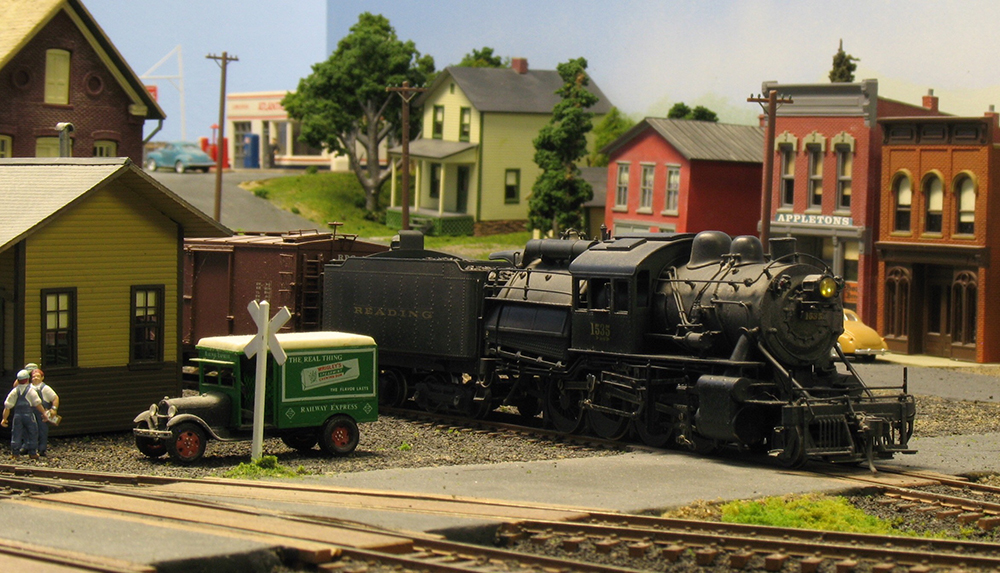
The name of my original Merkiomen Branch was a pun: murky omen. It was inspired by the Reading’s very scenic Perkiomen Branch, which meandered through the Perkiomen Creek Valley. I decided that since I was retaining the branch line theme for the new layout, I’d retain the name as well. To distinguish between the two, I decided the new layout would be the Merkiomen Valley Branch, but usually called it “The Merk.”
Building the layout
I built my layout using L-girder benchwork with a solid ½” plywood top. I cut away the plywood in several areas to introduce some variation to the scenery and better replicate the rolling hills of Pennsylvania.
The original plan had a mine on one side of the backdrop. Although I set the layout in Pennsylvania, I wasn’t modeling anthracite county, so I elected to use the mine’s space for a second town instead.
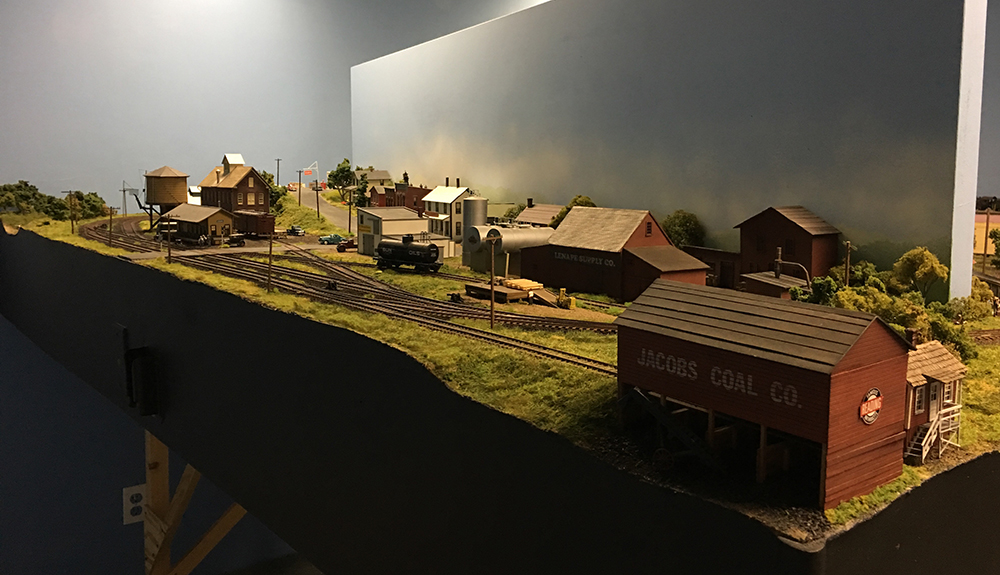
MR’s Alkali Central used code 100 track, but about the time I was ready to build the new layout, code 83 track was readily available from several sources. For my version, I used Walthers and Atlas code 83 components.
I’d used Shinohara code 70 on my first version of the Merkiomen Branch because I’d liked that track’s lightweight appearance when compared to code 100. However, the code 70 track also had some drawbacks, and I’d tried using it on my first layout where the original plan had called for Atlas Snap Switches with curved diverging routes, so I had a lot of kinks.
I found code 83 track to be a good compromise: it looked just about as delicate as the code 70 rail, but its turnouts fit the Alkali Central plan in MR better. I made a few changes to the plan as well, the most important was to swap out of the straight turnouts with curved ones from Walthers. The curved turnouts allowed me to eliminate a few awkward trackage arrangements required by the original plan’s straight turnouts. Since this was a branch line, I laid the track on N scale cork roadbed for a lower profile.
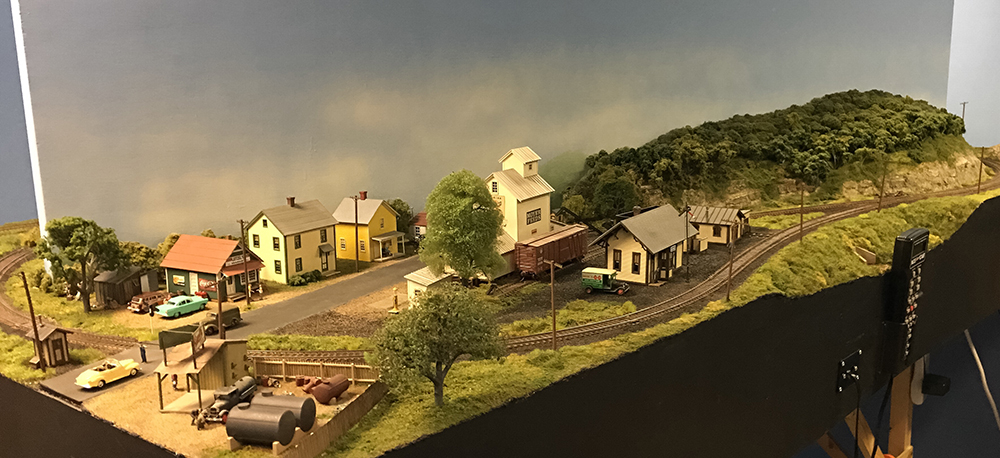
Following a tip often offered by the MR staff, I used Atlas sectional track for the two end curves on the layout. The sectional track worked great in retaining a uniform radius through the tight curves. I soldered all the rail joiners, provided smooth operation and good electrical conductivity. To improve the look of the sectional track, I removed the D-shaped ties on the ends of each section and replaced them with full ties.
Expansion
Because the Alkali Central was designed for expansion, I placed the short end of the layout with the interchange track against the wall. I then ran then extended the interchange track along the walls, forming an L-shaped extension for the main line. I built it on its own free-standing benchwork along the walls. I borrowed ideas from the Virginian Thin Branch project, which had been designed to add on to MR’s 4 x 8 Virginian layout.
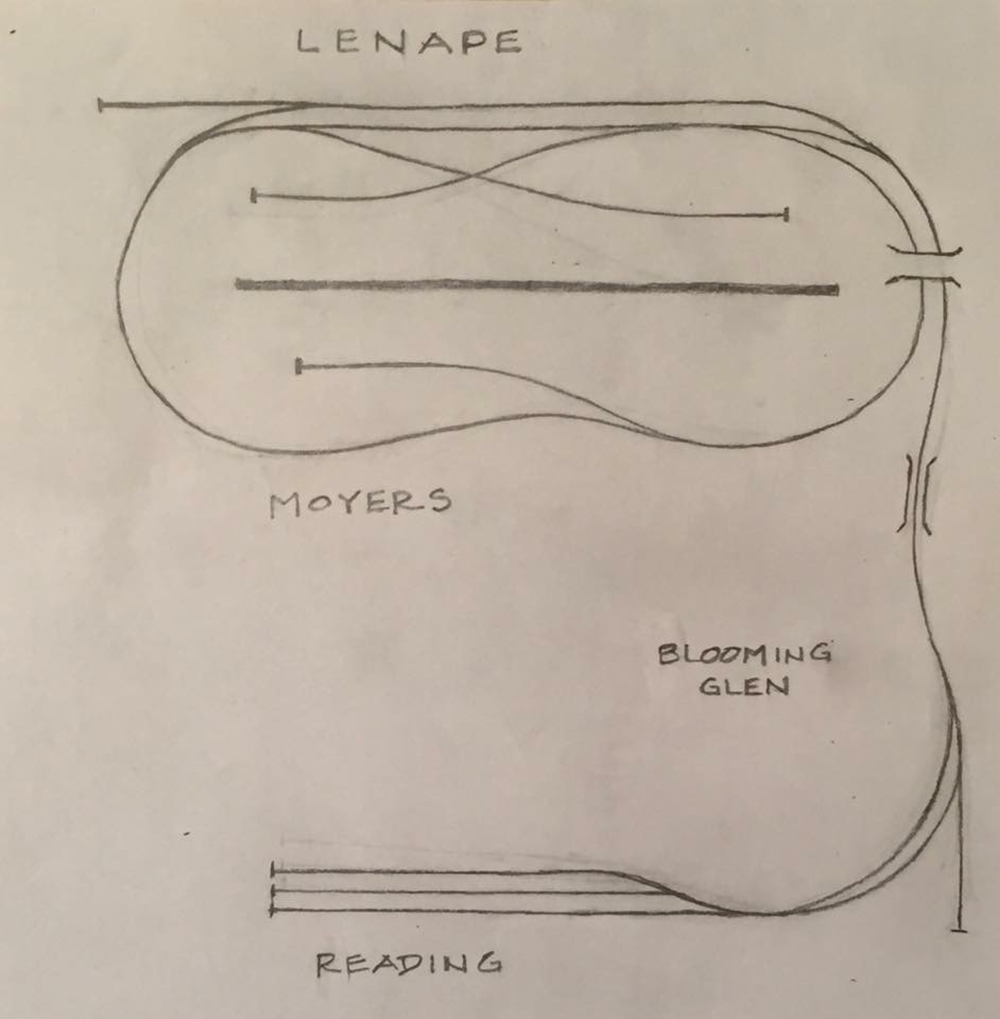
The extension includes the small town of Blooming Glen, which features its own station and freighthouse. It also includes the largest industry on the branch, Fenstermacher Windows, and it has a rural farm scene and a river and railroad bridge.
I used some different construction methods on this section of the layout, including supporting the track with Woodland Scenics’ risers and foam roadbed.

At the corner of the shelf, the track ducks under a one lane overpass and enters Reading – a three-track staging yard. Since I had painted the walls of the room the same sky blue I had used on the 4 x 8’s scene divider, I didn’t bother mounting backdrops behind the extension. The walls served as the backdrop.
Scenic developments
I built most of the scenery on the layout from foam covered with Sculptamold. I used a small hollow core door (a single bi-fold door panel) as the scene dividing backdrop and painted the backdrop sky blue and used acrylic artist’s paint to paint a simple background scene. The layout’s structures were a combination of kit-built, kit-bashed, and scratchbuilt models, and all were selected on the basis of how “Pennsylvanian” they looked. A couple of the structurers – Moyer’s Feeds and one of Lenape Supply’s warehouses – were based on structures build by Bill Rau for Model Railroader’s 1965 project railroad, the Ma & Pa.
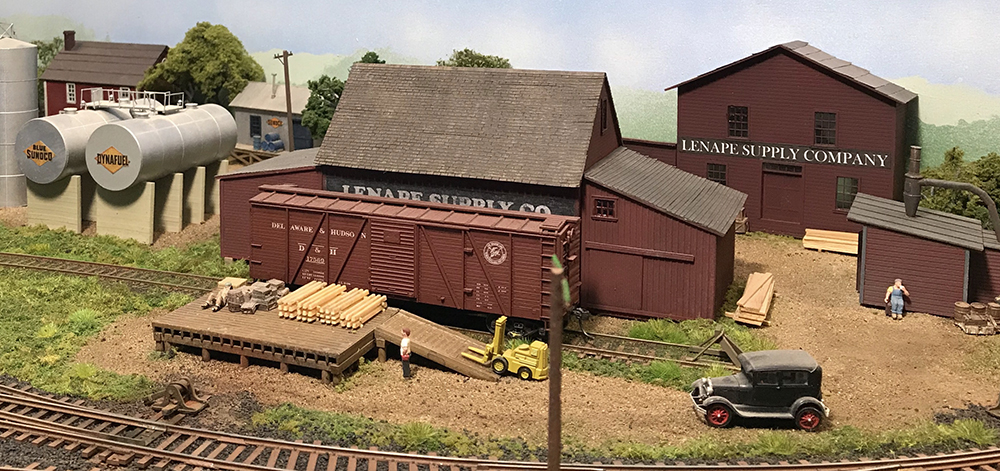
Roster and Operations
I’d purchased several brass Reading camelbacks in the late 70s and early 80s and built a couple of Mantua Goats (camelback 0-4-0s) from kits a few years later. I intended to model the late 1930’s, but I found steam locomotive models of twenty-five years ago balky and unreliable. With the introduction of Stewart’s (later Bowser’s) fine line of Baldwin diesels, I moved my era up to the mid-50’s and set the date on the layout to match my birthday, July 25, 1955.
Motive power for the Merk includes 2 VO-1000s, a DS-4-4-1000, an AS-16, an RS-3, and a GP7, all typical Reading branchline power of the era. I originally wired the layout for DC with an MRC handheld controller, but I eventually converted it to Digital Command Control.
Although I enjoy model railfanning – watching trains run through pleasant scenes – the Merk was designed to operate.
Reading, Pennsylvania was the hub for the branch’s daily freight. When running the railroad, the freight leaves Reading, switches Blooming Glen, and then slowly circles the layout several times before working the team track and feed mill at Moyers. After departing Moyers, the train again circles the layout before working Lenape, a large Pennsylvania borough that serves as the end of the branch line. Rail customers in Lenape include a coal yard, fuel oil dealer, building supply company, and feed mill. With its work complete, the engine runs around its train and returns to Reading via Moyers and Blooming Glen.
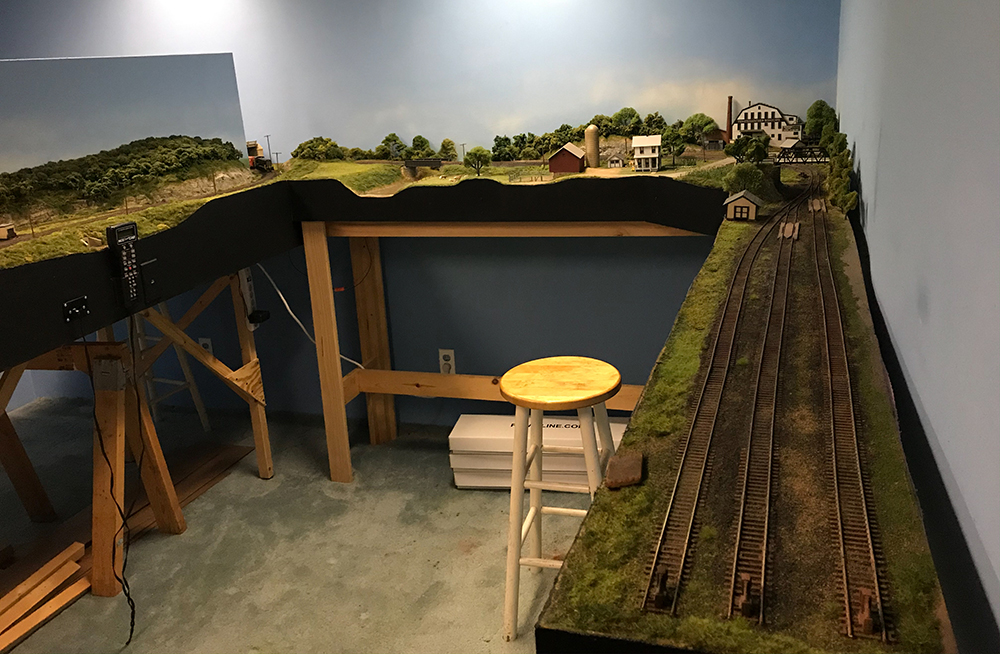
Epitaph
The Merk proved to be a lot of fun. However, since it occupied the basement of a parsonage – church-owned housing – the train room remained mine only so long as I remained the pastor of St. Timothy Lutheran Church. When I retired in July 2020, we gave up the parsonage and moved to a house we purchased in central Pennsylvania. The new house has a beautiful basement, but it wouldn’t accommodate the existing layout. I had hoped to sell it and even had a buyer at one point, but COVID made the transaction impossible. As a result, I scrapped the layout shortly before retiring.
The layout I’m currently building is a point-to-point, late steam era, Pennsylvania Railroad branchline terminal. It’s built in a corner and along two walls of our basement family room. I’m having great fun. Nevertheless, I sometimes miss model railfanning on the Merk.
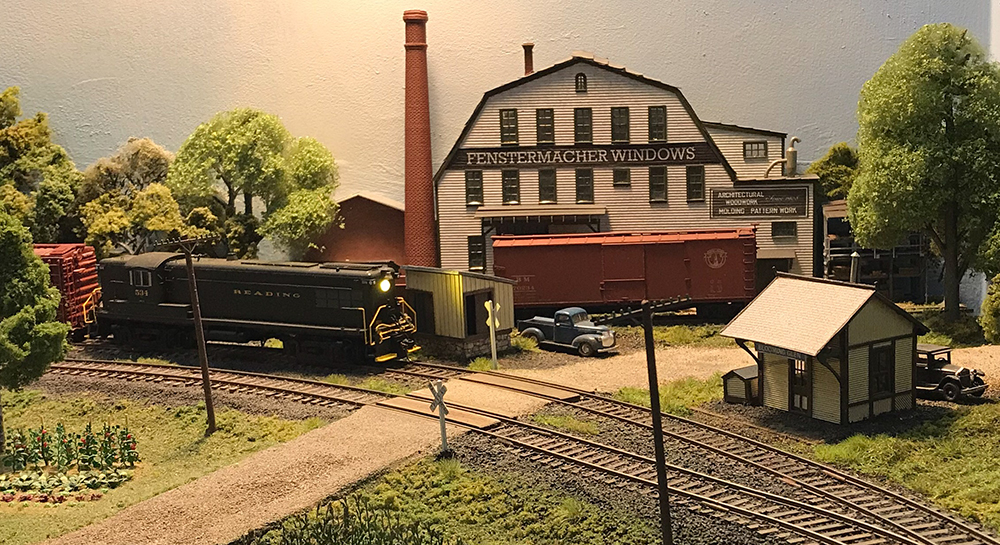
A Lifelong Attraction
I’ve loved trains all my life. My dad was a railfan and used my birth as an excuse to buy model trains to display at Christmas time. He dreamed of building a year-round layout and built quite a few craftsman kits, but the layout that never came to fruition. He also subscribed to Trains magazine and had a nice railroad library, which included a few model railroad related publications.
Robin Mountenay retired in 2020 after 39 years in the ministry. He and his wife Deb are spending their retirement riding rail trails on bicycle, exploring central Pennsylvania, and pursuing their hobbies. They like having a large basement family room where Deb can do her quilting and Robin can work on his layout while enjoying one another’s company.








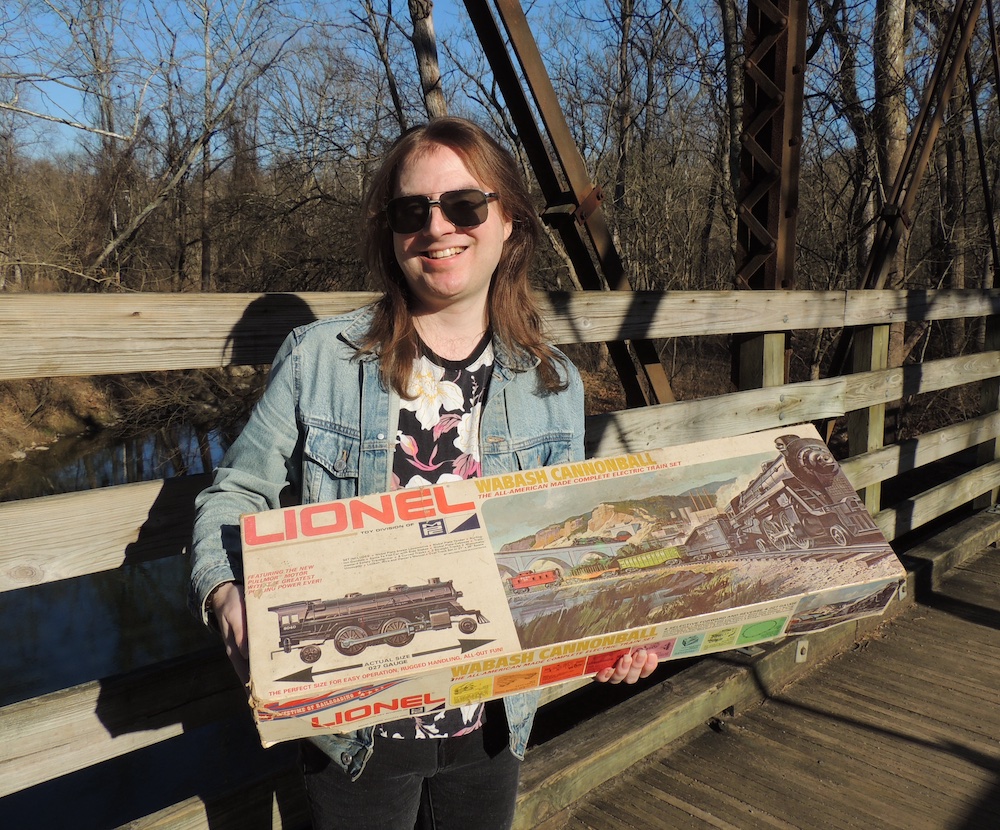
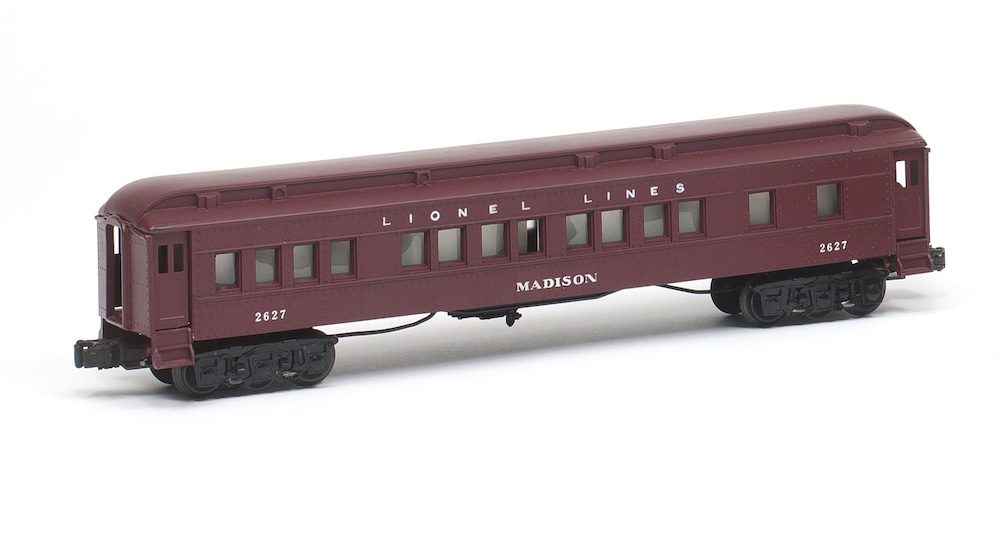




I’m from central PA and yes, you really capture the Pennsylvania look with the scenery, placement of structures, and the Reading Company structures themselves. Thanks for sharing!
Thanks so much! I’m glad you recognized the structures as genuine RDG real estate. Nearly out of sight is a Lenape station, a scratchbuilt model based on Reafing ‘s West Catasauqua station which is now the gift shop on the Wanamaker, Kempton & Southern tourist railroad.
Nice layout. Is the author’s name “Robert” or “Robin” — or both?
Both — Robin is a nickname and Robert is my given name. Take your pick! Thanks for the compliment!
Beautiful work that really captures the look and feel of Pennsylvania. Thank you for sharing this with all of us.
Thank you!
Very nice layouts. My dads birthday is July 26th, 1955. You’re a day older! Haha.
Thank you! It sound like your dad’s still a young man😁!
Nice article and layout – well done! Enjoyed reading about it.
Thanks so much! I enjoyed your article too and look forward to watch your progress!